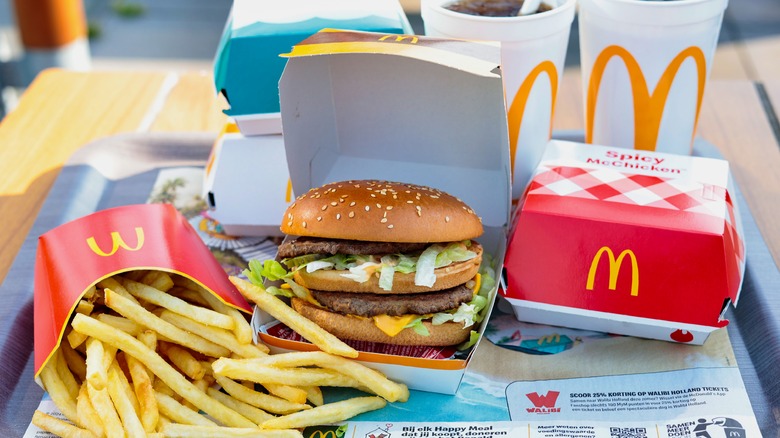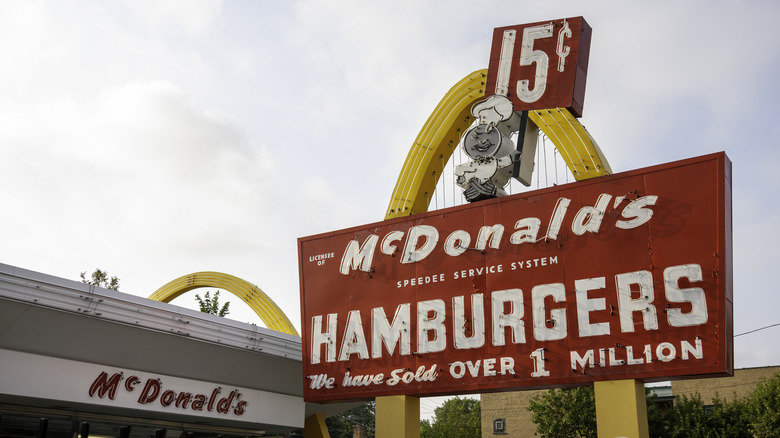How Much Did McDonald's Original Burger Cost When It Opened In 1940?
It's hard to imagine it now, but long before McDonald's was the global fast-food empire of today, it was just a family-run barbecue stand in San Bernardino, California. It was the year 1940, and two brothers Richard and Maurice McDonald had a brilliant idea that would change the course of food history. They opened a small burger joint with a simple mission — tasty food at a low price, made to order and made quickly. Of course, the menu wasn't filled with lavish items like KitKat Banana Split McFlurries back when it first opened. Instead, the first McDonald's menu focused on a handful of all-American staples. At the time of opening, the McDonald brothers likely never predicted that their classic burger would go on to become one of the most recognizable food items in the entire world. Ever wondered how many burgers McDonalds actually sells every day? Hint: it's a lot.
Back in 1940, a "pure beef hamburger" would set customers back just 15 cents (if you wanted to be indulgent and add some cheese to it, you'd be looking at 19 cents). A side of "golden french fries" was 10 cents, and washing it all with a soda would cost another 10 cents. These were considered cheap prices even at the time, which is likely why McDonald's became a hit with Californian locals looking for a tasty and affordable meal out with their family. To put those prices into perspective, 15 cents in 1940 is roughly $3.40 in today's money — still cheaper than a lot of fast food now.
From budget-friendly burgers to a billion-dollar business
By 1948, the McDonald brothers had scrapped their barbecue-heavy menu and introduced the Speedee Service System, which became the trademark approach to making food as fast as possible. In the 1950s, McDonald's franchising had taken off, and so had the prices. When the 1960s rolled around, McDonald's had introduced many of the iconic menu items we still have today, like the Filet-O-Fish, which has a good story behind it, and the Big Mac, as prices continued to slowly rise.
Of course, inflation plays a big role in these price increases, alongside growing portion sizes and overall business costs. The original McDonald's burger was smaller than today's version, with a strong resemblance to a slider, especially when compared to menu items like the Double Quarter Pounder offered at McDonald's locations in this day and age. In addition to larger food sizes, the company also spends millions on advertising, alongside costs to improve technology and modern advances like digital order kiosks and apps that tempt you with daily discounts. Considering all these costs, it's no surprise that a McDonald's Big Mac typically costs between $5-$6 today, depending on location. Despite all the changes the franchise has undergone, one thing remains a constant the world over: McDonald's knows how to deliver a quick and satisfying burger for a good price.


